International Space Station
Latest
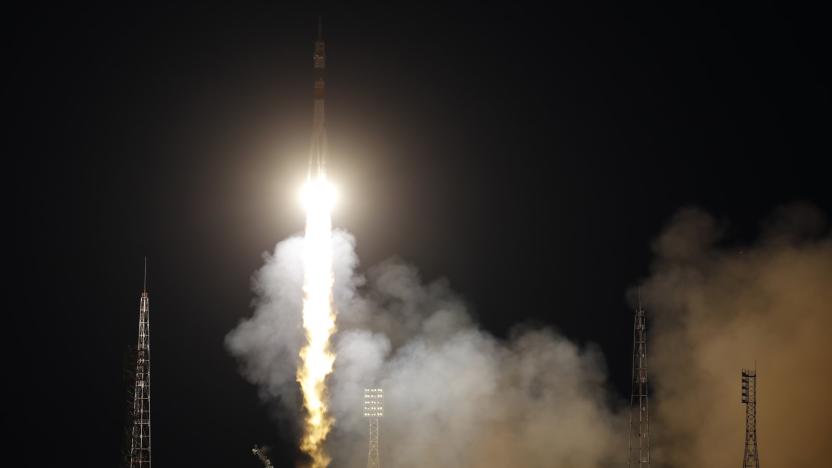
Russia is making more Soyuz spacecraft to help NASA's ISS missions
While the US wants to reduce its dependence on Russian rockets, Russia itself is expecting to help for a while yet. Roscosmos chief Dmitry Rogozin recently ordered the construction of two more Soyuz MS spacecraft, one of which will help NASA deliver astronauts to the International Space Station. The decision follows a letter from NASA director Jim Bridenstine warning of a delay in starting American commercial spacecraft flights. The US may need extra seats in 2020 and 2021, Rogozin said, and this extra spacecraft will help in a pinch.
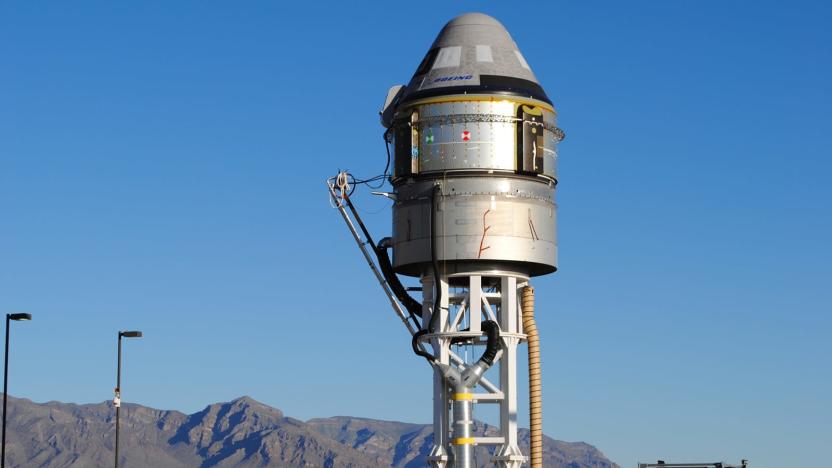
Watch Boeing's Starliner capsule launch abort test at 9AM ET
Boeing's CST-100 Starliner capsule is about to take a step closer toward taking people to orbit, and you can watch this step unfold first-hand. NASA and Boeing are streaming live coverage of the Starliner's pad abort test on November 4th at 9AM Eastern. Like similar tests, the New Mexico dry run will verify whether the vessel can safely jettison itself (and importantly, astronauts) away from its host rocket if there's an emergency before liftoff. The four launch abort engines and control thrusters will lift the spacecraft roughly a mile above the ground and a mile north of the test platform.
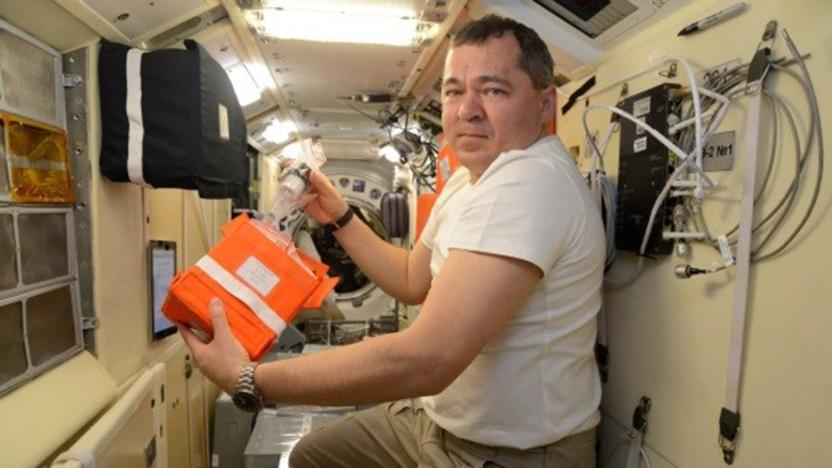
Astronauts bioprint beef in space for the first time
Lab-grown meat is no longer confined to Earth -- Aleph Farms and partners have successfully grown meat in space for the first time. The experiment, conducted aboard the Russian section of the International Space Station on September 26th, used a bioprinter from 3D Bioprinting Solutions to produce a cultivated beef steak. Aleph's growth technique replicates cows' muscle tissue regeneration process, just in artificial conditions -- the only big change for spaceborne creation is the faster maturation, since you can print from all sides at once instead of coping with the limitations of gravity.

The ISS' spherical robot helper has returned to Earth
Humans are one step closer to having robot assistants in space. The IBM- and Airbus-made CIMON (Crew Interactive Mobile Companion) robot returned to Earth on August 27th after successful testing aboard the International Space Station. The spherical machine demonstrated both its AI skills (such as recognizing astronauts and offering instructions) as well as its ability to float through the ISS. Don't think this is the end to the experiments, though -- this is really just the start.
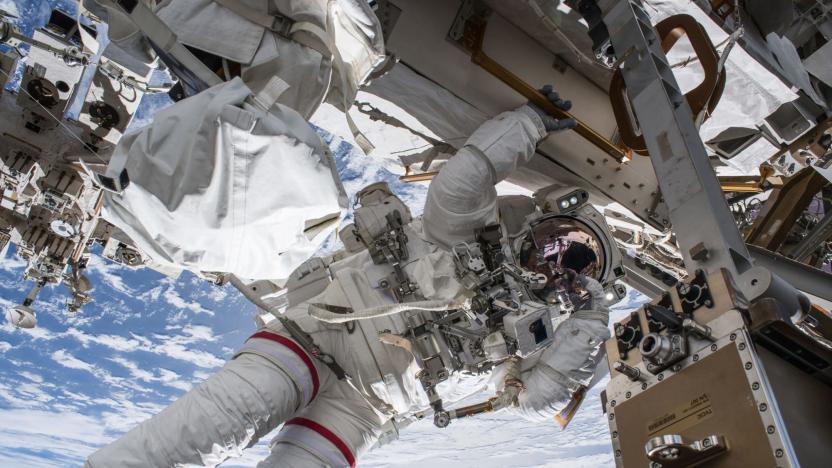
Watch astronauts install commercial spacecraft adapter on the ISS
NASA astronauts Nick Hague and Andrew Morgan are floating around in low Earth orbit today, installing the second of two docking adapters on the International Space Station. The international docking adapters -- or IDAs -- will allow Boeing and SpaceX commercial spacecraft to connect to the ISS and deliver crew members and supplies. Earthbound humans can watch the spacewalk on NASA's live feed below.

Watch SpaceX launch a twice-used Dragon capsule at 6:24PM ET (updated)
Want to know just how routine spaceflight has become? Just look at SpaceX's latest mission. The company is livestreaming the launch of its CRS-18 resupply mission for the ISS with an expected liftoff at 6:24PM Eastern, and every component from the mission is well-worn. The Falcon 9 launched a previous ISS supply mission in May, while the Dragon has visited the ISS twice -- once in April 2015 and again in December 2017. This is the first instance of SpaceX flying a Dragon capsule for the third time, the company said.

Watch astronauts reach space on Apollo 11's 50th anniversary
Earth is about to mark Apollo 11's 50th anniversary in one of the most fitting ways possible: sending people to space on the same day. NASA's Andrew Morgan (shown at left), Roscosmos' Alexander Skvortsov and the ESA's Luca Parmitano are launching on a trip to the International Space Station at 12:28PM ET today (July 20th), with NASA's live coverage starting at 11:30AM Eastern. The rendezvous with the ISS is slated for around 6:50PM ET. The crew will be joining NASA's current ISS residents Nick Hague and soon-to-be record setter Christina Koch, as well as Russia's Alexey Ovchinin.
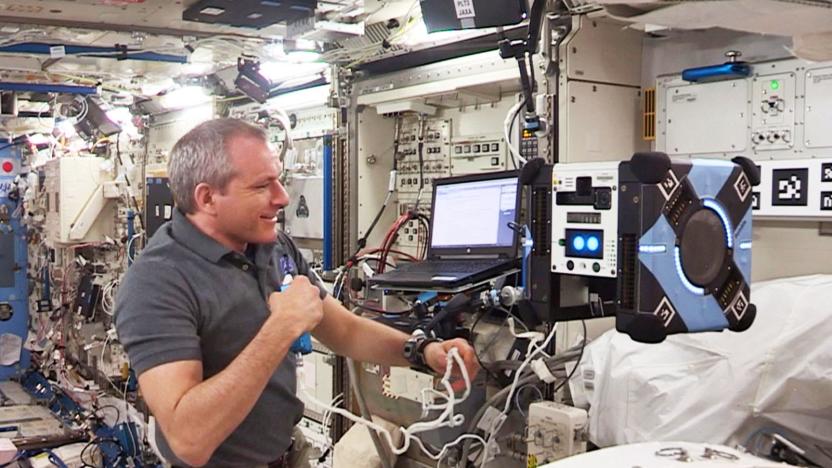
NASA's Astrobee cube robot flies in space for the first time
NASA's Astrobee cube robots are finally earning their space wings... in a manner of speaking. The agency has confirmed that one of the bots, Bumble, flew on its own for the first time aboard the International Space Station on June 14th. While the trip involved only basic movements like flying forward and rotating, it was proof machine could work in its intended microgravity environment.
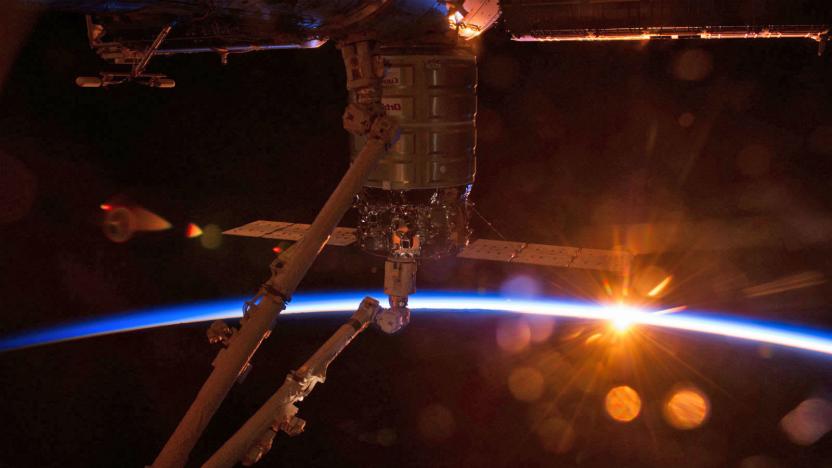
NASA opens the International Space Station to commercial ventures
The International Space Station (ISS) is open for business. NASA announced today that it plans to commercialize the ISS, so that "U.S. industry innovation and ingenuity can accelerate a thriving commercial economy in low-Earth orbit." According to a press release, NASA will open the space station to private astronauts, as well as commercial product development, testing and manufacturing.

NASA's Astrobee cube robot completes first hardware tests in space
NASA just inched closer to having robots take care of spacecraft. The agency recently completed its first hardware checkouts for Bumble (above), one of three Astrobee robots that will research automated caretaking aboard the International Space Station. The bot won't float on its own until later in the spring, but it should be good to go -- including for automated recharging at its docking station, Kibo.
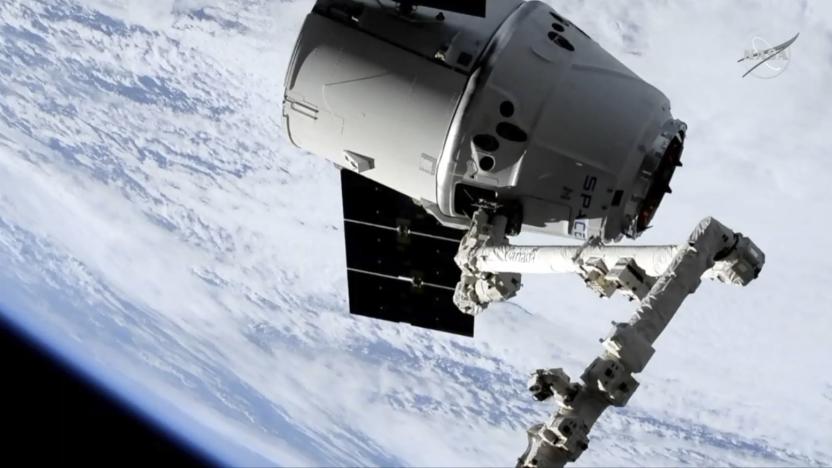
SpaceX delivered 5,500 lbs of cargo to the International Space Station today
A SpaceX Dragon cargo spacecraft successfully made its way to the International Space Station (ISS), with approximately 5,500 lbs of NASA cargo and science experiments. It launched Sunday from Cape Canaveral Air Force Station in Florida, and it arrived today, joining five other spacecraft currently docked at the station.
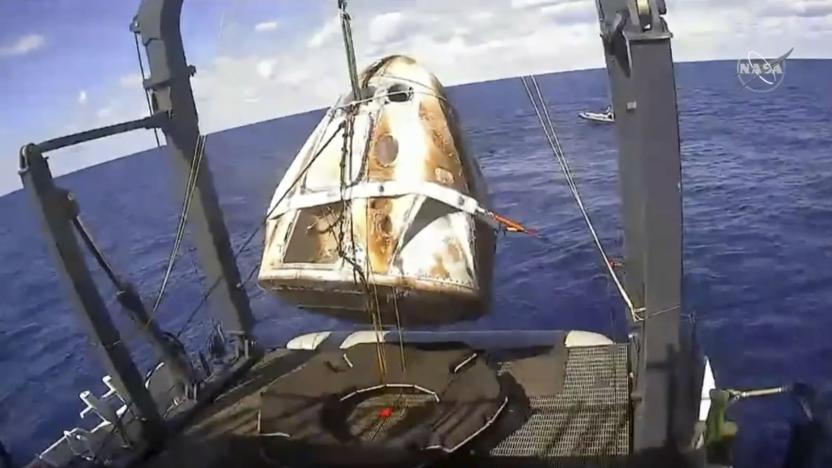
SpaceX says its Crew Dragon capsule was destroyed during test
A SpaceX official confirmed Thursday during a press briefing that one of the company's Crew Dragon capsules meant for crewed spaceflight was destroyed, according to CNBC. The update from the company confirms reports that followed the failed April 20th test. SpaceX has yet to provide more details about the incident other than to say it was the result of an "anomaly." The company still moving forward with a plan to launch another Crew Dragon capsule that is set to dock with the International Space Station.
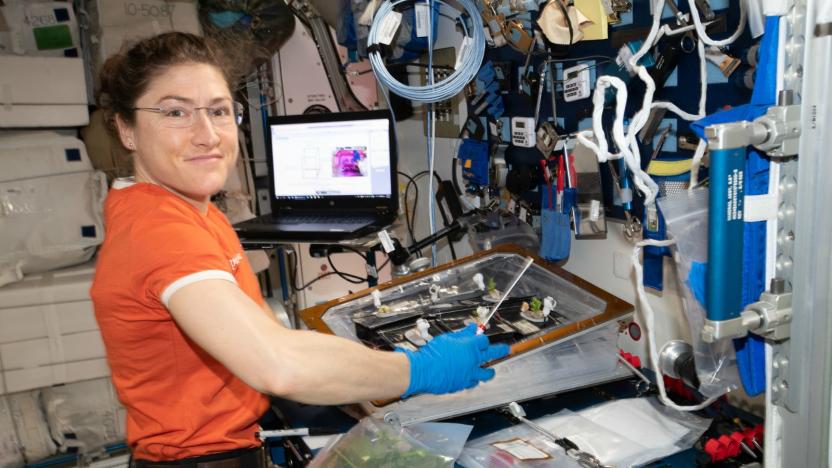
Christina Koch will set a record for longest spaceflight by a woman
Thanks to NASA's recent schedule changes, astronaut Christina Koch will soon hold the record for the longest space flight by a woman. Koch arrived at the International Space Station on March 14 and has already conducted one spacewalk. She'll now remain in orbit until February 2020, and she'll surpass the current record, which is 288 days, held by Peggy Whitson. But Koch will fall just short of the longest spaceflight by a NASA astronaut -- Scott Kelly's 340-day trip.

The ISS is crawling with nasty bacteria
NASA scientists have found that the International Space Station (ISS), home to six astronauts, is infested with disease-inducing bacteria. Many of the organisms breeding on the craft's surfaces are known to form both bacterial and fungal biofilms that promote resistance to antibiotics. The NASA team published their findings in a new study -- the first comprehensive catalog of germs in closed space systems -- in the journal Microbiome. The biofilms ability to cause microbial-induced corrosion on Earth could also play havoc with the ISS' infrastructure by causing mechanical blockages, claim the researchers.
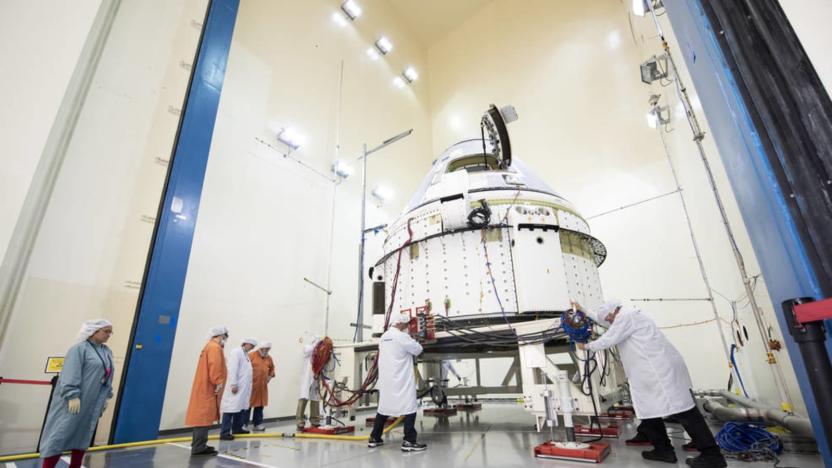
Boeing delays its first Starliner test flight until August
For a while, Boeing and SpaceX have been neck-and-neck in their race to provide the first commercial space travel. That might be changing, as NASA and Boeing announced they'll delay the first uncrewed flight test of Boeing's Starliner. The spacecraft will now launch in August -- a full year after it was first scheduled to takeoff.
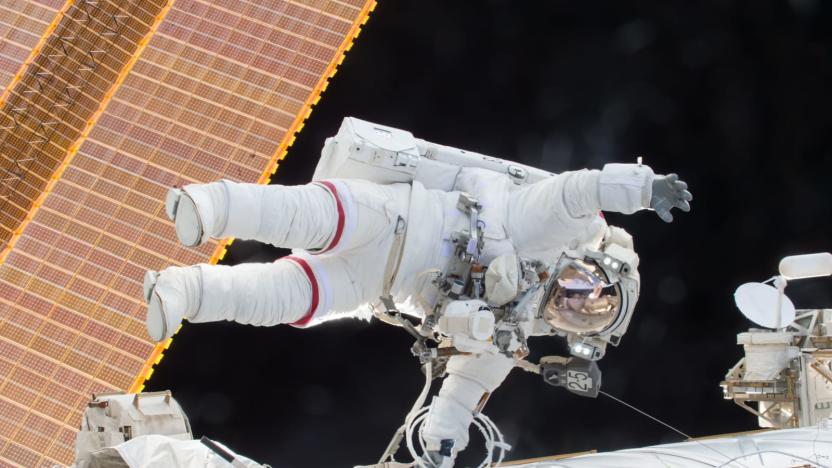
The first all-female spacewalk takes place March 29th
After several decades of human spaceflight, you're finally going to see the first all-female spacewalk. NASA has confirmed that astronauts Anne McClain and Christina Koch will venture outside the International Space Station on March 29th. This wasn't intentional, the agency told Axios -- it just so happened that the particular crew aboard the ISS led to the team-up. If you've been following the progression of the space program, however, it might not be quite such a surprise.
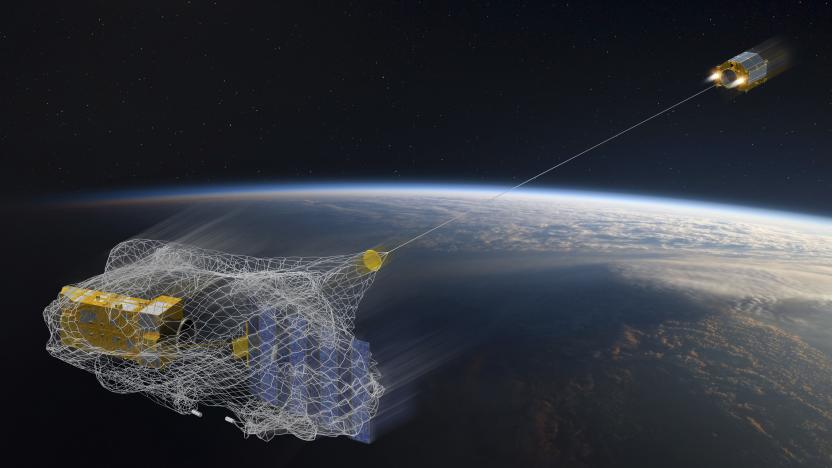
The robots that will sweep Earth's skies
After six years in space, China's first orbital station, the Tiangong-1 (aka the "Heavenly Palace") has finally outlived its operational limits and begun its descent to Earth. It's expected to re-enter the atmosphere in a few months, whereupon a majority of the 9.3-ton station should burn up before reaching the surface. This is how defunct satellites are supposed to be disposed of. Unfortunately, until very recently, that hasn't often been the case.
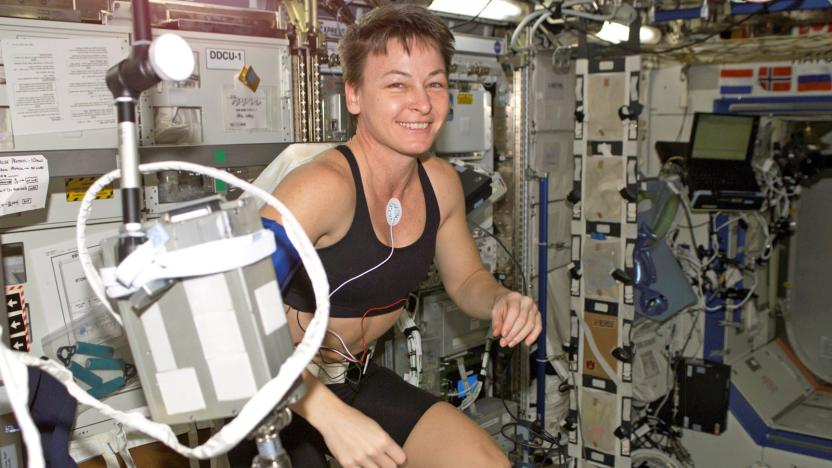
How Peggy Whitson stayed in shape for nine months aboard the ISS
Space is no place for battles of the bulge. That's why NASA insists on getting its astronauts into peak physical condition before sending them offworld. But aboard the ISS, in a living space the size of a football field, the human body will readily go to pot. So how did Peggy Whitson, the longest-orbiting astronaut in American history, manage an astonishing nine and a half months in microgravity without having her body and mind atrophy? She hit the astronaut gym. Yes, of course, there's a gym on the ISS -- just, no lap pool.
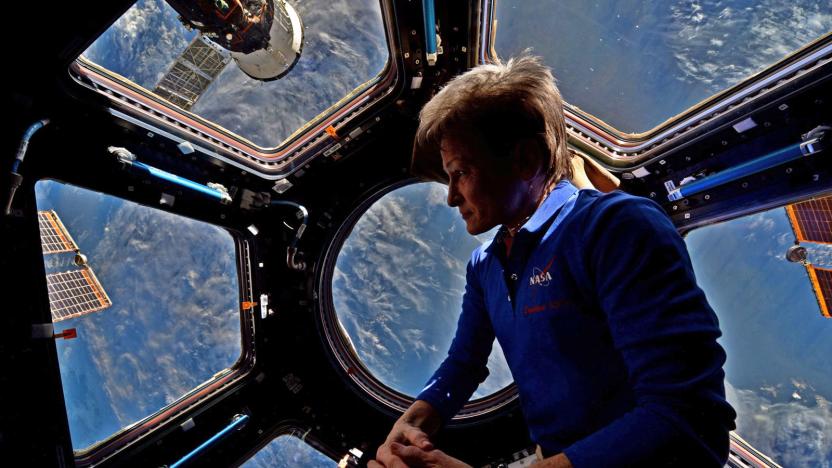
America's longest-orbiting female astronaut has safely returned home
After spending 665 days whizzing 254 miles above the surface of Earth aboard the International Space Station, Astronaut Peggy Whitson has successfully reentered the atmosphere and set down safely in Kazakhstan. That's the longest time spent on the ISS for any woman astronaut in history -- or any American astronaut for that matter.
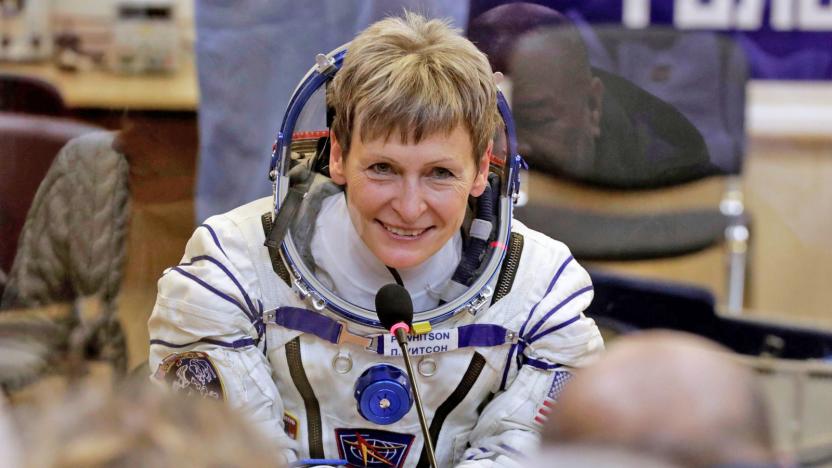
Peggy Whitson breaks the US record for cumulative time in space
US astronaut Peggy Whitson has officially broken the US record for cumulative time spent in space. As of 1:27 AM ET today, she had spent 534 days, 2 hours and 49 minutes in space -- a number that has obviously increased since then. But that amount of time spent in space broke the record previously held by Jeff Williams. Her current run on the International Space Station started on November 17th, 2016, and her mission was recently extended from March until September. By the time she returns to earth, she'll have accumulated more than 650 days in space. Whitson has also spent more than 53 hours outside the ISS doing spacewalks, a record for female astronauts.






